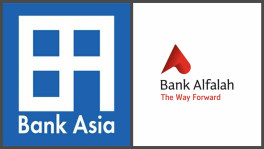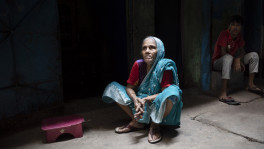Crab farming: How to do it sustainably
Large-scale crab farming was preceded by salt-water shrimp farming which lost its sustainability due to increased salinity levels and related virus attacks

Soft-shell crab farming is a rapidly growing industry near the mangrove delta of Shyamnagar, Satkhira. Some people consider this as a successful adaptation technique against the salinity problem of the region.
Thanks to its profit margins, the outsiders are investing a lot in crab farming. Unfortunately, too much focus on its immediate monetary benefits has made us blind to its long term environmental impacts and socio-economic vulnerability.
Crab farming, an export-oriented industry, has huge demands from Japan, China, Malaysia, Thailand, and Hongkong. In the fiscal year 2019-2020, according to the Export Promotion Bureau, Bangladesh exported crabs worth $35 million. Such large-scale export opportunity itself explains the increasing number of crab farms in Shyamnagar and other coastal areas.
To earn quick profits, people are converting arable lands into 'ghers' posing a threat to the remaining agricultural production capacity against salinity. This in turn limits livelihood options for the local communities and makes the industry vulnerable to environmental calamities like cyclones or in case of an export ban.
The natural calamities such as cyclone Bulbul, Amphan, and Covid-19 pandemic's catastrophic impacts on the industry elucidate enough on the socio-economic upheavals resulting from over-dependence on crab farming. Both income and food security of the local community were compromised. Such vulnerabilities are signs of a less resilient community that lacks the capacity to cope with unpredictable amounts of yearly natural disasters like cyclones or pandemic outbreaks like Covid-19.
The social inequity of the industry also puts its sustainability in question. On the question of real beneficiaries of crab farming, we have seen that whenever something goes south, the locals were the most hard-hit group. Why? Because most farms are owned by outsiders where locals are employed as workers.

Losses in crabs and closure of farms resulted in a severe income loss of the locals which also implies the downfall of their food security. On the contrary, the owners were comparatively less affected because most of them are wealthy.
It requires a total of $6,104 per hectare of land for crab production as stated in an early 2021 Elsevier journal article. This makes crab farming an exclusionary industry barring easy entry to the poor locals. So, the vulnerabilities such as social inequity, lack of resilience, livelihood loss, income and food insecurity associated with crab farming challenge the long term efficacy of the industry.
The adverse environmental impacts of crab farming are significant too. In Shyamnagar, largescale crab farming was preceded by salt-water shrimp farming which lost its sustainability due to increased salinity level and related virus attacks.
Introducing shrimp farming further exacerbated the salinity level, and consequently, agricultural production is rarely possible now. The scenario was opposite only a few decades ago.
This same experience also creates a fear that such large scale crab farming and conversion of arable lands into 'ghers' may further accelerate the salinity level to an extent where crab farming or any other crop production might become impossible.
The increase in salinity will also cause extinction of many fish species in the river system. Moreover, there are chances of salinity level rise due to the region's frequent exposure to cyclonic storms.
Biodiversity, aquatic life, and human life of the locality are at risk too. In the process of exchanging farm and river water via canals, untreated brackish water, as well as the waste of dead crab shells, are flushed out to the river. This, in the long run, might pose a serious health concern for both human and aquatic life.
The demand for wild crabs remains high as they are more resilient in larvae forms than the farmed ones. This often lures crab fishers to break laws and harvest during the banned period.
The presence of crab farms in vast numbers also increases unethical actions and over-exploitation of natural stock. Though there are few hatcheries, the supply is way too less for demand.
Also, the wild crabs remain high in demand as they are more resilient in larvae forms than the artificial ones. This often lures crab fishers to break laws and harvest during the banned period. They hamper the breeding process of crabs in this process and damage other species in bycatch. If such unethical practices continue, we might witness irreversible environmental degradation of the local ecosystem.
Successful implementation of the aquaculture mandate in Bangladesh's Blue Economy Plan is necessary. Given the area's susceptibility to natural disasters, emphasis should be given on increasing and protecting alternative livelihoods to prevent any economic crisis and induced poverty.
Monitoring should be increased to prevent conversion of arable lands into 'gher' to protect our agricultural capacity and to avoid our over-dependence on crab farming.
Empowering the local people is a key to address social inequity. Local people should be trained and aided financially to set up farms. These steps will help create a resilient and solvent community.
For the environment's sake, we should control the fast-growing number of farms that might accelerate the rise of salinity levels.
The management of farming practices should be monitored regularly. Flushing out of brackish water and production waste should be checked. In addition, an efficient fishing ban and number of hatcheries should be increased to prevent over exploitation of the natural stock.
The activities of the farms should be monitored and punished if caught with wild crabs during the banned period. The numbers of farms and hatcheries need to be balanced; an equal or close to equal ratio between 'gher' and hatcheries should be maintained to decrease dependency on wild crabs. Some 'ghers' could be converted into hatcheries to match the supply-demand.
Certainly economic stability is a factor that every vulnerable community looks up to. While we choose our adaptation strategy, we should not only resist the temptation of opting for quick monetary gain but also critically evaluate our adaptation approach for long term sustainability.
At present, we are focusing more on the immediate monetary benefits of the soft-shell crab industry in Satkhira. Unless we consider both ecological and socio-economic factors associated and take appropriate measures accordingly, we might lose its competency just as we had lost the prawn farming industry.
Mohammad Budrudzaman is a Research Assistant for Centre for Sustainable Development, University of Liberal Arts Bangladesh, Dhaka. He can be reached at [email protected]
Disclaimer: The views and opinions expressed in this article are those of the authors and do not necessarily reflect the opinions and views of The Business Standard.


 Keep updated, follow The Business Standard's Google news channel
Keep updated, follow The Business Standard's Google news channel
















